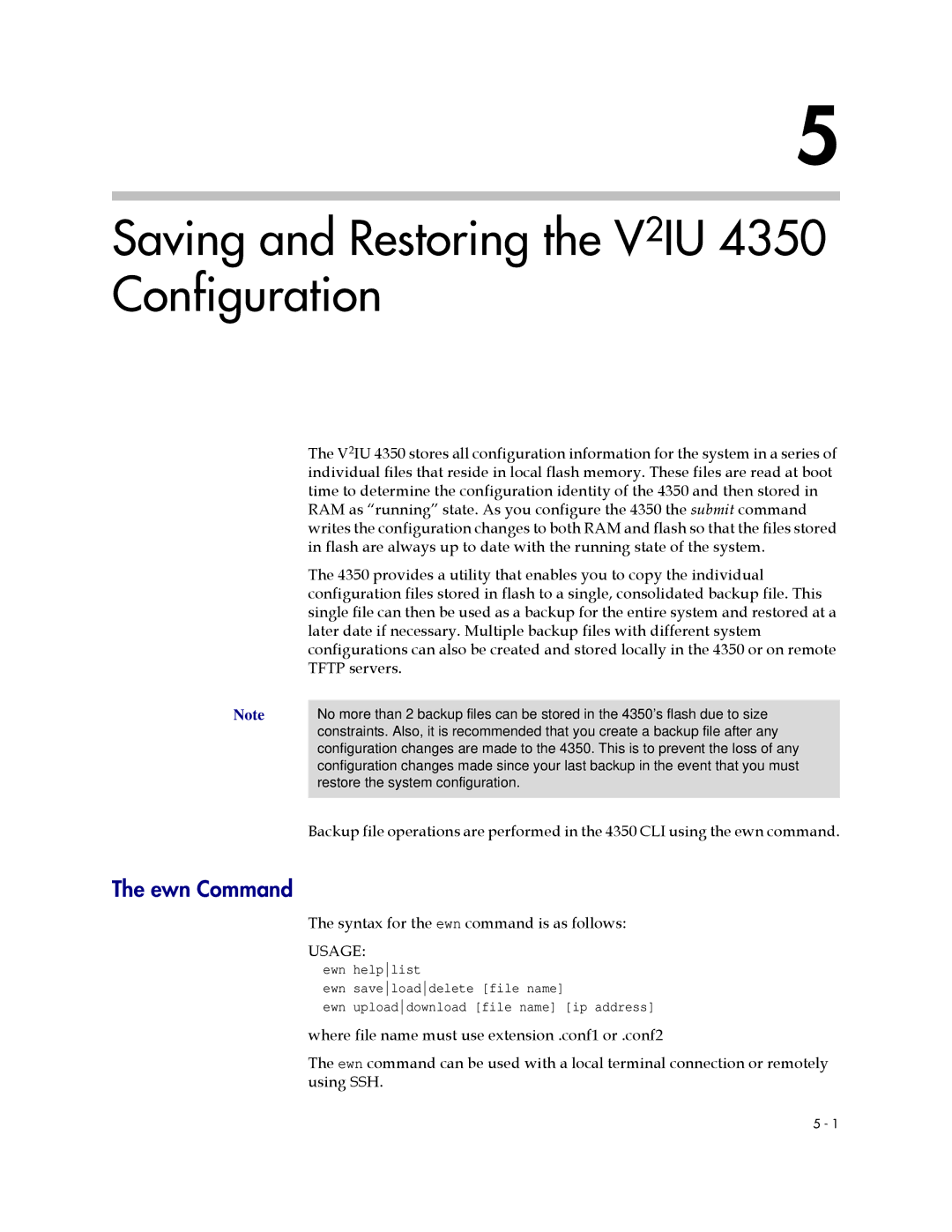5
Saving and Restoring the V2IU 4350 Configuration
| The V2IU 4350 stores all configuration information for the system in a series of |
| individual files that reside in local flash memory. These files are read at boot |
| time to determine the configuration identity of the 4350 and then stored in |
| RAM as “running” state. As you configure the 4350 the submit command |
| writes the configuration changes to both RAM and flash so that the files stored |
| in flash are always up to date with the running state of the system. |
| The 4350 provides a utility that enables you to copy the individual |
| configuration files stored in flash to a single, consolidated backup file. This |
| single file can then be used as a backup for the entire system and restored at a |
| later date if necessary. Multiple backup files with different system |
| configurations can also be created and stored locally in the 4350 or on remote |
| TFTP servers. |
Note |
|
No more than 2 backup files can be stored in the 4350’s flash due to size | |
| constraints. Also, it is recommended that you create a backup file after any |
| configuration changes are made to the 4350. This is to prevent the loss of any |
| configuration changes made since your last backup in the event that you must |
| restore the system configuration. |
|
|
| Backup file operations are performed in the 4350 CLI using the ewn command. |
The ewn Command
The syntax for the ewn command is as follows:
USAGE:
ewn helplist
ewn saveloaddelete [file name]
ewn uploaddownload [file name] [ip address] where file name must use extension .conf1 or .conf2
The ewn command can be used with a local terminal connection or remotely using SSH.
5 - 1
